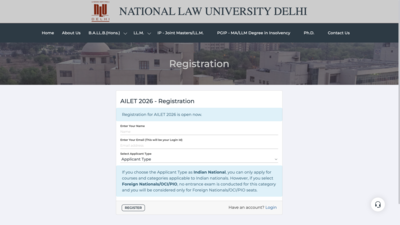In August 2025, the U.S. Bureau of Labor Statistics (BLS) did something uncharacteristically jarring—it quietly downgraded previous job estimates, revealing that 258,000 jobs initially reported for May and June had not, in fact, materialised. July’s fresh data wasn’t any better: Only 73,000 new jobs were added, marking the weakest performance since the COVID-19 collapse of 2020. The picture was bleak enough to prompt a public reckoning. As Douglas Holtz-Eakin, former director of the Congressional Budget Office, told CNN, “The job market is terrible. Outside of education and health, the economy has lost private sector jobs in the past three months. That’s terrible.” It wasn’t just a statistical correction—it was an unmistakable signal that the engine of job creation was losing steam.President Donald Trump’s reaction to the BLS report? Swift and severe. He fired BLS Commissioner Dr Erika McEntarfer, accusing her of intentionally damaging the economy’s image ahead of the election cycle. The move sent shockwaves—not only because it politicised statistical reporting—but because it underscored a dangerous truth: when narratives trump numbers, policy decisions can become erratic and targeted.For Indian professionals on H‑1B visas, many working in sectors (mostly tech) directly affected by these shifts, this wasn’t just a Washington shake-up. It was a flashing red light.
Economic gloom and the growing crisis for Indian techies on H-1B visa
Nowhere has the economic slowdown hit harder—or more symbolically—than in the technology sector, the very engine room of American innovation and the primary destination for skilled Indian immigrants on H‑1B visas.According to Crunchbase, over 95,000 U.S.-based tech workers were laid off in 2024, with an additional 4,500 roles eliminated in just one week of July 2025. The CRN list of 2025 tech layoffs reads like a who’s who of Silicon Valley titans: Meta, Microsoft, Amazon, Google, Salesforce, Intel, and Oracle. Salesforce, notably, has placed a full freeze on hiring new software engineers this year.These aren’t merely cyclical belt-tightening measures. They mark a structural recalibration of the sector—away from expansive hiring and toward leaner, AI-driven operational models. And that recalibration comes with a sharp, often underdiscussed casualty: H‑1B visa holders, the majority of whom are Indian and heavily concentrated in tech roles.Indeed, according to the National Foundation for American Policy, Indian nationals received 72% of all H‑1B visas in recent years. Top sponsoring firms include Amazon, Cognizant, Infosys, and TCS—all deeply enmeshed in the tech ecosystem now undergoing contraction.The fallout is visible and brutal. As per Bloomberg, more than 200,000 tech workers were laid off in the U.S. between November 2022 and January 2023 alone, and industry estimates suggest that 30–40% of those affected were Indian IT professionals. Nearly 80,000 Indian workers on H‑1B and L‑1 visas have faced job losses since late 2022, many with just 60 days to find a new employer before being forced to leave the country.This is not just an economic hiccup. It’s a systemic shock—a cold pause that is statistical, immediate, and structurally skewed against the very immigrant talent that helped build the American tech miracle.
The rising heat against OPT and H‑1B deepens the crisis
The American economic engine may be sputtering, but for Indian professionals in the U.S., it’s not just the slowdown that’s cause for alarm. A rising wave of political hostility toward high-skilled immigration—especially the OPT and H‑1B visa programmes—is turning an economic risk into a full-blown career crisis.The Optional Practical Training (OPT) programme—long considered the vital bridge from American universities to the U.S. workforce for international students—is now facing the threat of repeal. Critics have labelled it a regulatory loophole, arguing that it allows foreign graduates to bypass traditional labour certification and take American jobs.Leading the charge are figures like Jessica Vaughan of the Center for Immigration Studies, who calls OPT a “shadow guestworker programme.” And in a chilling turn, Joseph B. Edlow, now USCIS Director, has declared his intent to “remove the ability for employment authorizations for F‑1 students beyond the time that they are in school.”This isn’t just political theatre. Ending OPT would dismantle the first step in the employment ladder for thousands of Indian graduates, especially in STEM fields where they make up the overwhelming majority. For many, OPT isn’t just optional—it’s their only on-ramp to long-term employment and eventual H‑1B sponsorship.The rhetoric extends well beyond student pathways. Former Trump strategist Steve Bannon has called for an immediate moratorium on all foreign student visas, declaring: “No foreign students should be in the country right now.” His remarks have been echoed—more pointedly—by Congresswoman Marjorie Taylor Greene, who has explicitly demanded a ban on Indian H‑1B visa holders, claiming they displace American tech graduates.What was once fringe positioning is now bleeding into legislative language and policy debate. The MAGA playbook is evolving from anti-undocumented sentiment to a more coded, targeted hostility toward high-skilled immigrants—particularly those from India, who dominate both the H‑1B and OPT pipelines.
A vicious loop: Job cuts, visa heat, and the Indian immigrant squeeze
The combination of shrinking tech opportunities, hostile political rhetoric, and legal uncertainty is producing a chilling effect that’s both economic and existential. None of these developments—slowing job growth, rising layoffs, or anti-immigrant sentiment—exist in isolation. They’re mutually reinforcing. A weaker economy provides the political cover to restrict immigration. Restricting immigration further strains sectors already short of talent. It’s a vicious loop, and Indian workers are caught in the middle.TOI Education is on WhatsApp now. Follow us here.






